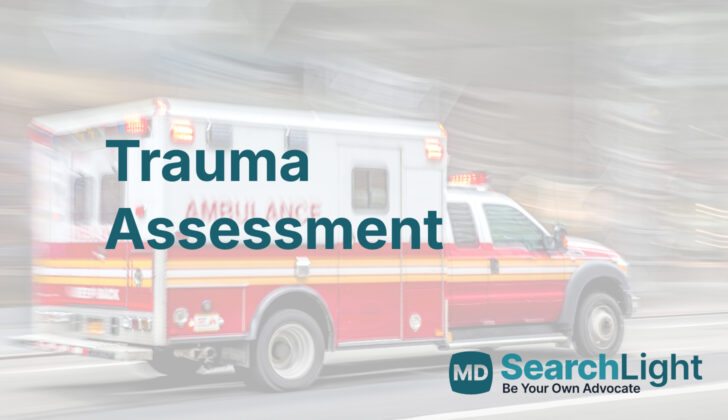Overview of Trauma Assessment
Trauma, or physical injury, is the main cause of death globally. In the United States, it is the leading cause of death among young adults and accounts for about 10% of all deaths. Each year, there are around 50 million visits to the emergency department due to trauma-related injuries. The most common reasons that trauma can lead to death include severe bleeding, heart or lung failure, and the failure of multiple body organs.
It’s important to have a thorough and systematic way to assess people who come in with trauma injuries. This means doctors, nurses and other medical staff need to work together and communicate well. The main goal is to find any immediate dangers to the person’s life and to stabilise their condition.
How is Trauma Assessment performed
When dealing with a trauma patient, the first step usually occurs before the patient reaches the hospital. The first responders, usually paramedics, gather initial information about the patient’s injuries, vital signs, and any first aid that has been administered. They also provide information about the incident that caused the injuries. This information helps the doctors and nurses at the hospital to prepare for the patient’s arrival by gathering the necessary equipment and by starting to plan the appropriate treatment.
The hospital’s trauma team is usually led by a doctor. Other members of the team may include nurses and other healthcare professionals, all of whom have clearly defined roles. The team leader makes the main decisions during the patient’s treatment, based on information from the first responders and from the team’s assessment of the patient.
The team checks everything they think they might need before the patient arrives. They prepare everything for procedures like securing a patient’s airway (intubation), monitoring the heart, getting IV access, and more as needed. They try to prepare for whatever the first responders have told them, but also make sure they are ready to handle unexpected issues.
When the patient arrives, the trauma team follows a protocol known as the primary survey. This involves checking the patient’s:
1. Airway: If they’re conscious, the team talks to them to assess if they’re breathing clearly. If unconscious or not breathing well, the patient might be intubated (have a tube placed in the windpipe to aid breathing).
2. Breathing: The team checks for signs of injury, difficulty breathing, or if the patient’s chest moving unusually. They’ll listen to the lungs and check the chest by touch for abnormalities. If trouble is found, like a punctured lung, it’s addressed immediately.
3. Circulation: The goal is to control any major bleeding and make sure the patient’s body is getting enough blood flow. The team checks for apparent bleeding, how the skin feels, and the patient’s consciousness.
4. Disability: After checking the airway, breathing, and circulation, the team tests how alert the patient is and checks physical responses to get a sense of possible injuries to the nervous system.
5. Exposure: The patient’s clothes are removed to check for any injuries that might have been missed.
The team works to keep the patient warm during this process, as getting too cold can cause other complications. Once the patient is stable, a more detailed check can be made, including a head-to-toe examination and more specific diagnostic tests. By focusing on the most critical issues first, the emergency team can provide the best care for trauma patients.
Possible Complications of Trauma Assessment
When assessing patients after a traumatic event, doctors need to be careful to avoid certain mistakes. If a patient’s health worsens during the evaluation, doctors should not proceed with the next step. Instead, they should immediately reassess the patient’s basic health status (ABCDE: Airway, Breathing, Circulation, Disability, and Exposure), as this is the best way to uncover a potential life-threatening condition. It’s also important that doctors don’t get distracted by obvious, eye-catching injuries like burns or fractures and neglect this basic evaluation.
A significant mistake to avoid is sending a patient, who is not stable, away from the emergency care area for testing like X-rays or CT scans. Also, doctors shouldn’t delay moving a patient to a center that provides more specialized care in order to carry out tests or procedures that might not be necessary. Once it’s clear that a patient needs to be moved to a center with higher level of care, the transfer process should be started without delay.
What Else Should I Know About Trauma Assessment?
Trauma injuries, which refer to severe body injuries that can occur from things like car accidents or falls, are treated every day in the hospital emergency room. Knowing how to quickly and accurately assess these injuries is crucial for healthcare providers, regardless of where they work. A speedy and comprehensive evaluation of trauma can reduce the severity and the death rate of these injuries.












